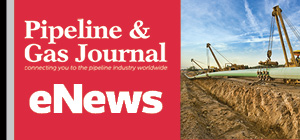January 2025, Vol. 252, No. 1
Editor's Notebook
Editor’s Notebook: Better Days, Sure – but How Much?

By Michael Reed, Editor-in-Chief
(P&GJ) — While early indicators point to the likelihood that a second Donald Trump administration will bring renewed investment in midstream, there remain a few reasons that the next Big Boom might fall at least a little short of some people’s expectations.
While the new president’s stated policies certainly paint a favorable picture for midstream over the next few years, if implemented fully, there will be a few sticking points along the way, many of them going beyond those posed by political and legal challenges.
For example, recently none other than Liam Mallon, outgoing president of ExxonMobil Upstream Company, said that despite what may turn out to be some significant permitting and regulatory changes, it is unlikely a Trump presidency will trigger significantly greater production.
“We’re not going to see anybody in ‘drill, baby, drill’ mode,” he told an audience at the recent Energy Intelligence Forum conference in London, going on to stress companies will continue to focus on “capital discipline” and other factors that will limit the growth rate.
He did acknowledge, however, that the possibility of relaxed land permitting processing (the opening up of leasing on federal land, for example) could provide a short-term boost to production, which in turn might affect midstream positively.
Mallon also said Exxon, itself, expects to grow beyond 2 MMbpd in the Permian shale basin within the next few years, with increases expected until 2030.
At any rate, Trump’s transition team will be fine-tuning a sweeping energy package that should be rolled out not long after his Jan. 20 inauguration. And enough is known about it for midstream owners and operators to have a potential “wish list” in mind.
The obvious top spot is – and has been for years – the streamlining of the cumbersome and often redundant approval process for oil and gas pipeline projects. In my mind, some aspects of the actual inspection processes could be included here.
Additionally, high among the hoped-for changes would be the restructuring of Department of Energy (DOT) regulations in a way that would make the overall transportation of LNG less of an arduous process.
Separately, this could include changes that would limit states’ abilities to block some pipelines. A recent case that might have been affected would be New York’s decision to block the Northern Access Pipeline after nearly a decade of delays.
The proposed pipeline, which would have shipped natural gas from the Marcellus Shale to markets in western New York, the Midwest and Canada, was hampered for years through the use of Section 401 of the Clean Water Act.
[Trump had narrowed the scope of Section 401 during his previous administration, but those changes are currently being challenged in court by the Biden administration.]
With Republicans in control of both houses of Congress for at least the next two years, pending the 2026 mid-term election, at least some of Trump’s agenda will likely be implemented.
However, any incursion into items perceived to restrict states’ rights will make maintaining a united Republican Party for the vote difficult. This will be especially tricky in the House, where the party holds only a narrow advantage.
In the end, of course, market demand and economic feasibility will determine how much of a lift for midstream construction projects will occur during the new presidency.
Remember, Former President George W. Bush had been an oilman and Vice President Dick Cheney was once the CEO of oilfield services giant Halliburton. Nevertheless, during their eight years in office, between 2001 and 2008, oil production fell 13.7%, to 5 MMbpd.
And Keystone aside, former President Barack Obama ended up at the helm during a pretty dynamic period in which the U.S. went from producing 5 MMbpd to 9.5 MMbpd.
Was that the Bush administration’s doing? Was it Obama’s doing? Come on. You already know the answer to that.





Comments